Many People Getting Tattooed Across The South Down Area
People across Down are making their own personal statements by getting tattoos and tattoo artists are being kept quite busy writes David Boden.
The history of body art dates back to a means of identity among the indigenous tribes of the world. There is even an underground culture of tattooing among gangs and prisoners. Arguably the most notable example of the wide range of graphics would be teardrops – either as an outline or solid black to indicate either the death of a gang mate or remorse for having committed murder.
One colourful character who sported his tattoos was Popeye the Sailor Man. And back in the in the 70s and 80’s particularly with “ Sailor Jerry” in America, they served as a permanent travel reminder within the members of the marines. Often brightly coloured images like palm trees, anchors and mermaids with phrases added.
In bygone eras there was a stigma towards tattoos, particularly within visible areas of the body in a working environment. However, in the 21st century, tattoos are a lot more socially acceptable.
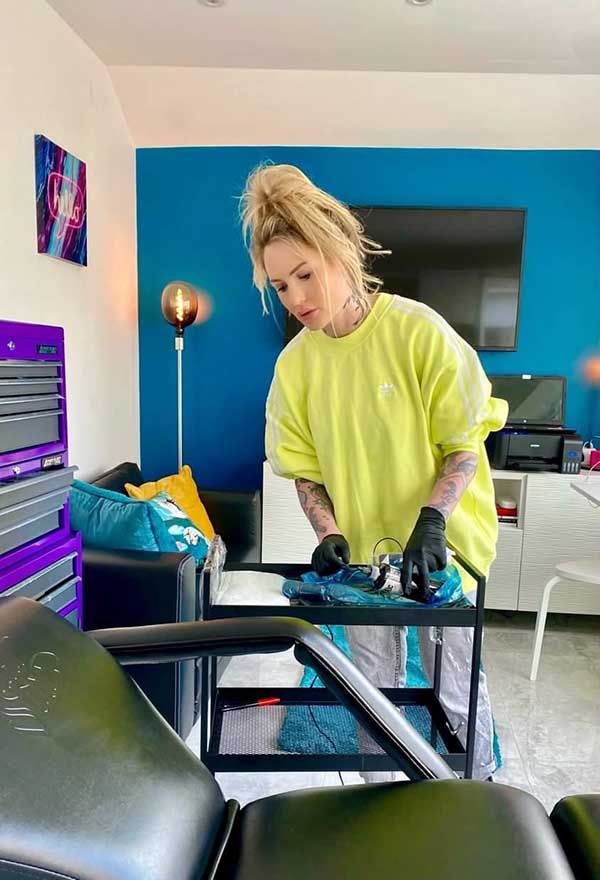
Historically, the tattoo industry was dominantly masculine. Today we live in a more progressive society where there are an equal amount of females in the industry. They are strong, independent women with a talent for business as well as a passion for creating memorable art on the human body and in turn establish a bond with their loyal customers.
In chatting to a few local tattoo artists who run their own tattoo studios within the region of South Down, it was clear each has their own style and tattooing.
Rachel McEvoy (34) from Newcastle is now running her own studio from her home in the centre of Newcastle.
She served her tattoo apprenticeship with Gigi Mc Queen, owner of the former McQueen Tattoos, having previously qualified as a body piercer in the same Tattooist studio.
Having personally been tattooed by Rachel on numerous occasions, I can vouch for her professionalism 100% in terms of hygiene, and can say she has an eye for detail and her friendly rapport with her clients. Said qualities are essential to survival in this practice.
How did your passion for art begin and how did the dramatic transition from studying law to being a piercer and now a talented tattoo artist and successful businesswoman happen?
“I was interested in art and drawing from a young age. My granny did landscape painting. She inspired and encouraged me.
“As I got older I excelled in college level art and was a high achiever.
“I went from A-Levels at the Assumption Grammar in Ballynahinch to studying a law degree after being told I wouldn’t find any work in art. However, I pursued the artistic route but having completed my degree I knew that I didn’t want a career in the legal profession.”
As a means to an end Rachel undertook numerous jobs. One of which included working as a classroom assistant at Knockevin Special School in Downpatrick. A role Rachel is well suited to as a friendly and caring young lady and mother.
Away from the busy world of work and motherhood , her compassion is ever present as she volunteers as a basketball coach with Shimna Stars ( a basketball team in Newcastle for adults with special needs, of whom have successfully competed in Special Olympics).
By happenstance, Rachel then took on an administrative role in a local tattoo parlour where she graduated to being trained and officially qualified as a body piercer. Showing talent and passion, she further progressed to a tattooist’s apprenticeship.
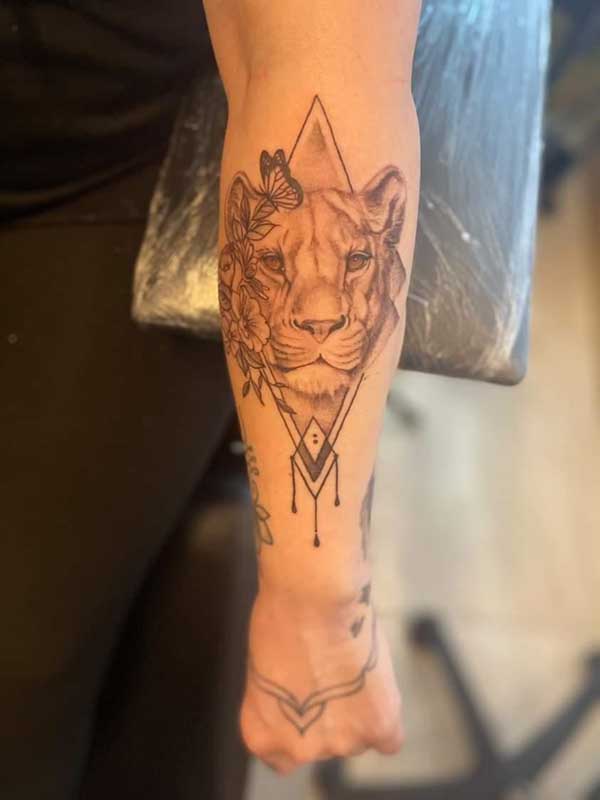
She added: “I didn’t have a plan as such when I started working in a tattoo studio where I soon trained as a body piercer.
“I loved my job as a piercer and most of all I loved the creativity of the art that surrounded me. I then transitioned from a piercer to an apprentice tattoo artist and I knew I found my calling!”
Describe the preparation required before engraving the human body and what issues did COVID pose to you and the tattoo trade as a collective community?
“ With regards to the actual process, not much has changed. One of the key factors in tattooing is hygiene and the prevention of cross-contamination. We were practicing those methods long before Covid.
“Covid did pose difficulties as it meant we couldn’t operate for a long time.”
Have you got a speciality or a preferred style and consequently are there styles that you are likely to refuse to do ?
“As far as a style goes , I would say I favour finer lined work. I like detailed and delicate designs and tend to lean towards a more realistic approach.
“I don’t like to box myself into one style… I love combining styles and being creative.
“I love to challenge myself and constantly be progressing – that is one of the best things about being part of the tattoo industry- there are no boundaries in regards to evolving and being creative. I am constantly inspired by other artists.
“I am honoured to create permanent art for people in memory of a loved one who has passed on. I would say that I gain most of my fulfillment from those aspects of my craft”.
What advice would you offer to aspiring tattoo artists ?
“My advice would be to constantly draw. With all the resources available online there are so many reference points to provide inspiration.
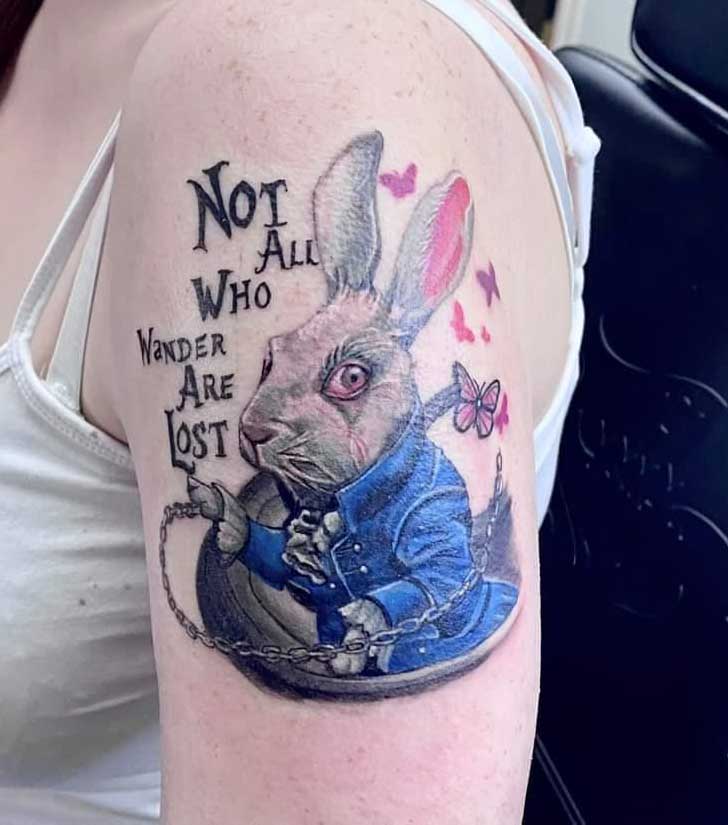
“It is also wise to build a portfolio of different drawings and styles (examples: portrait, black and shade, colour, different cultures ) and when you become confident in your drawing skills approach reputable studios about an apprenticeship.
“Keep going and trying, regardless of how many times you may encounter rejection. It is a difficult and mentally challenging profession, but if you want to be part of it you will achieve it with practice and self-belief.”
Rachel works from a recently-built studio adjacent to her home in 10 Larchfield Park Newcastle.
***
I understand that not all our readers are wearers of body art. There are likely some readers soon to undergo their first tattoo. In either case, they will have queries. As someone who has been on the receiving end of the needle many times, there are questions I am qualified to answer.
Firstly, tattooing is safe providing a customer uses a studio that follows good hygiene practices and are certified and they are approved by their local council.
Hygiene is crucial to survival in this industry, but the practitioners are not the only people who must adhere to good hygiene – it is equally important for the client too.
Once the tattoo is completed, the artists will clean and wrap the tattoo in cling film. After a couple of hours, the wearer of the tattoo will have to wash their tattoo in warm soapy water and apply cream daily until healed. This is to avoid infection and to help heal quicker. It typically takes 2 to 4 weeks, but healing time is largely dependent upon the size of the tattoo.
During the healing process the inked area must remain covered. It is therefore wise if getting the lower leg tattooed, to do so in the winter as once the summer comes it will be fully healed and the owner can wear shorts without the risk of infection from sunlight.

It is also recommended to avoid swimming, sunbeds and spray tans during the healing process.
And yes it can hurt. I think it is safe to say the first time hurts marginally more as it is a new experience. I am used to it after over 20 years, but personally I’ve felt the most pain on my back and torso. This is likely because they are boney areas where the skin is less dense. As a consequence, it is in these said areas of my body where I have bled significantly more.
I would also advise those due to experience their first tattoo to not drink alcohol the night before and get a bit of extra sleep. This is because being under the needle can be tiresome and when one’s consumption of alcohol could affect judgements. In the morning prior to being tattooed, have a shower and a big breakfast.
The reason for this is that the artist will be physically very close to their client so it is important to smell good. Eating well before will prevent passing out midway. Stopping to eat during the process can cause inflammation of the skin. It’s also recommended to have sugary snacks and drinks along the way to prevent blood sugars going too low.
Many tattoo artists may have formal art based schooling, but there is no certified training solely in tattooing, though all studios and their staff are legally licensed in order to practice, just like a doctor would be licensed by an institute in addition to being university educated.
For those wishing to tattoo for a living, the only way is to land an apprenticeship with a reputable studio. This will require constantly drawing and producing portfolios of various styles and subjects in both color and shade. Meanwhile this will likely require a day job so it is wise to train in other areas as a safety net.
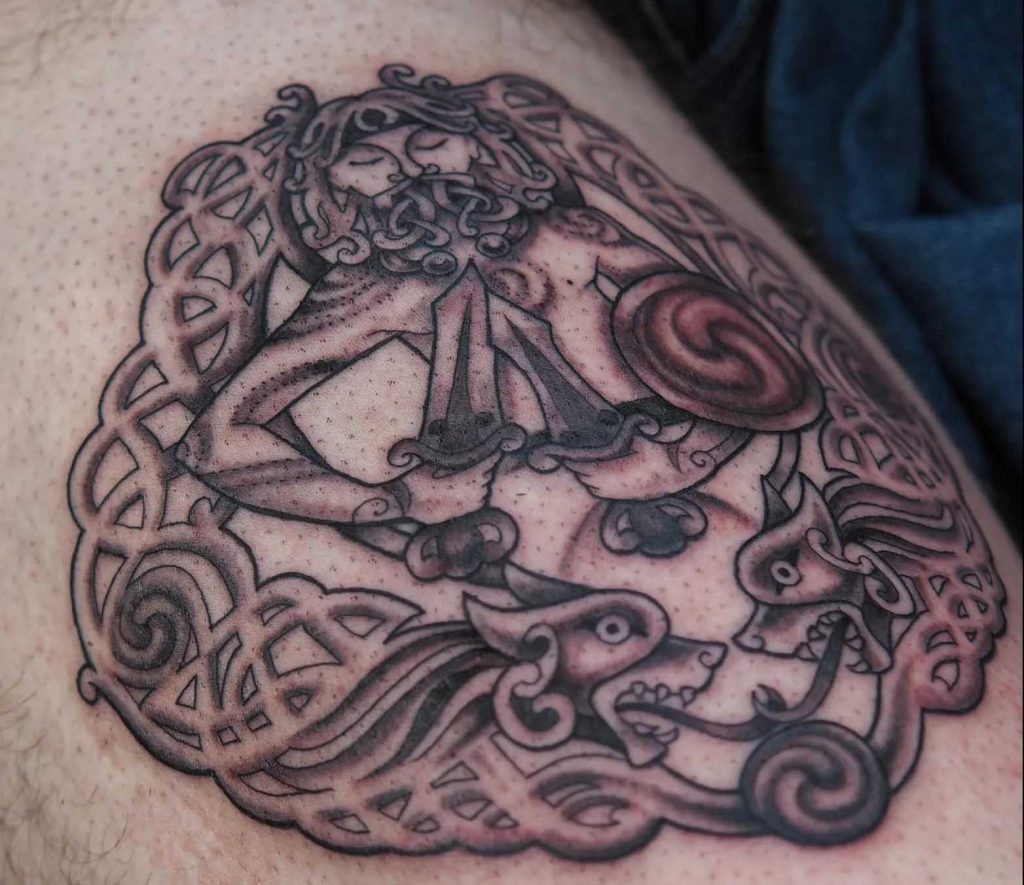
Castlewellan Tattoo is situated in Castlewellan Upper Square and is the brainchild of Janine Triskele. Now in her 50s, Janine has been tattooing since 1994. As well as being highly accomplished in tattooing, she is equally accomplished as a painter. She has a particular fondness for Celtic art and the mystical power such imagery evokes.
When one feels confident in their drawing skills, the key to landing an apprenticeship is showing your work to as many tattoo studios as possible. A successful tattooist will recognise talent and potential in an aspiring artist though they may not be of the luxury to offer an apprenticeship for numerous reasons so be prepared for rejection.
One fundamental requirement is a steady hand. The human body is a temple and there is no time for mistakes. Therefore another aspect is maintenance of equipment and becoming competent by drawing on artificial skin. Many have done so by using skins of fruit and meat.
Janine Triskele, Tattoo Artist, Castlewellan.
Describe how you were attracted to art and how this led to an almost 30 year legacy in tattooing:
” I have been into art since I was a kid. I was always drawing and painting. Art was my favourite subject at school. I went to art school in England.Tattooing wasn’t part of the plan. By a happy accident I landed a tattooing apprenticeship in 1994. I’ve been tattooing ever since.”
Some tattoo artists are self-taught as apprenticeships are not always easy to come by. Can a self-taught tattooist still have a license and legally practice ?
“I believe so now but I did hear in another jurisdiction that there is a minimum number of years a self-taught artist has to be active before obtaining a licence. There is no substitute for in-store training.

“Whilst there are self-taught artists that are naturally talented and hygienic, being self-taught means not getting the full training in sterilisation and handling of blood.
“There are some amazingly gifted tattoo artists that have absolutely no people skills and are rather unpleasant.
“When you undertake an apprenticeship with a reputable tattoo artist you master good people skills and a rapport with your clients. This is also vital to staying open.”
As a keen collector of tattoos and a resident of Castlewellan, to discover this shop was a Godsend. Having availed of Janine’s skills, I can vouch for her talents, hygiene, pleasant manner and all-round professionalism.
Have you ever tattooed over scarred skin and did these clients share a story that moved you emotionally ?
“Yes a lot over the years. Be it self-harm scars, burn scars and mastectomy scars. I’ve even tattooed over scars of old tattoos. One guy I tattooed over was a plumber and I tattooed over where a bust pipe fell on his back.”
Janine showed me her portfolio. A large part of the clients upper back had been heavily scarred as a consequence. I must admit it did look rather gruesome. It has been aptly covered with a dragon. In many cultures (not just oriental) dragons are archetypes of courage and fearlessness.
Equally courageous are women who have replaced their mastectomy scars with eloquent art and choosing not to be ruled by past ordeals. So it is too with those who have been plagued with mental torment and resorted to self-abuse. Tattooing over cuts and burns is a declaration that they are now more emotionally robust and in contrast to their past, they want to live.
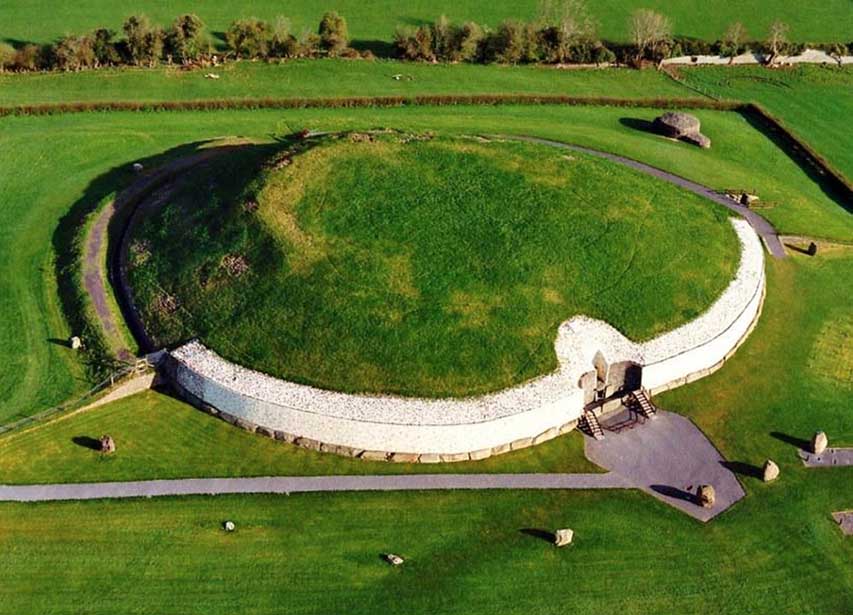
Can you recall being commissioned to create a particular obscure or complicated tattoo ?
“I recently tattooed Boyne Valley Art from New Grange. As the customer wished to remain anonymous I have Googled a picture of New Grange, County Meath. This is a passage tomb where light passes through as summer changes to winter.
An impressive 5000 years old, it predates Stonehenge and even the Egyptian Pyramids. It is an iconic piece of Irish history though not a typical choice of tattoo.”
However, Janine does have passion for Celtic Art and Ireland’s mystical past. Therefore, the customer choses wisely when commissioning Janine if Celtic art is their preference.
It is such attention to detail like researching an appropriate artist and how an image resonates with the client that means it is a pleasant and memorable experience for both parties. That is when body art is tasteful and stands the test of time.
Crossgar Tattooist
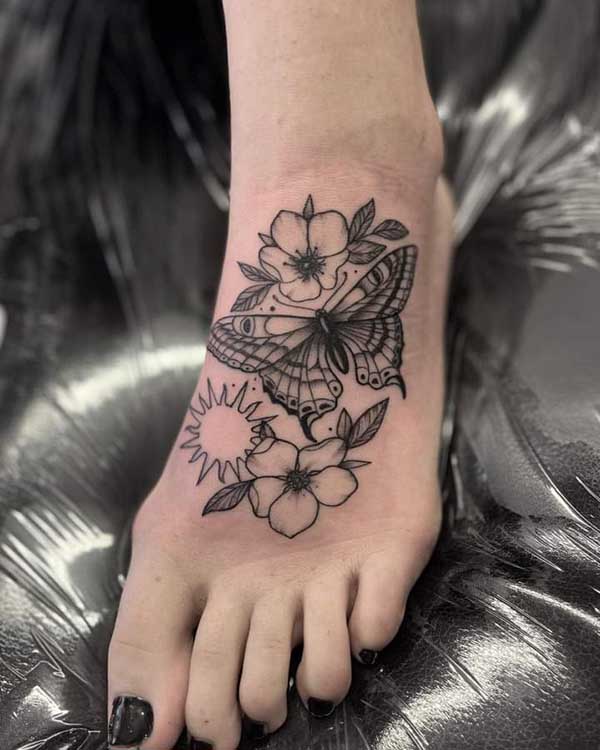
Hannah Earley (26) and has been tattooing for the last 6 years. Along with her partner Daniel Fagan, he runs Diablo Tattoos in Crossgar. She speaks of her passion for art since childhood and her experiences in the tattoo industry both good, bad and indifferent.
Have you ever worked in a tattoo studio where you were the only female member of staff? If so, did that present any challenges or experiences of an unpleasant nature?
“Yes. I have worked in 2 studios where I was the only female for a period of time.For a large amount of time, I was treated respectfully and seen (from my perspective) as an equal among other artists.
“There have been a handful of unpleasant experiences where potential clients have refused to even consider being tattooed by a female. This is because they didn’t believe a female as skilled at tattooing, without even seeing examples of any of the present artists in the studio.“
Is there a particular artist or style that inspired your passion for art and was there a moment that drew you to pursue tattooing as a career?
“ There was never a particular artist that inspired my passion for art. It’s just something that has always been in me since I was a child. I just wanted to create whether it was drawing , painting or doing make-up.”
“ I just enjoyed making something come to life from my mind.“
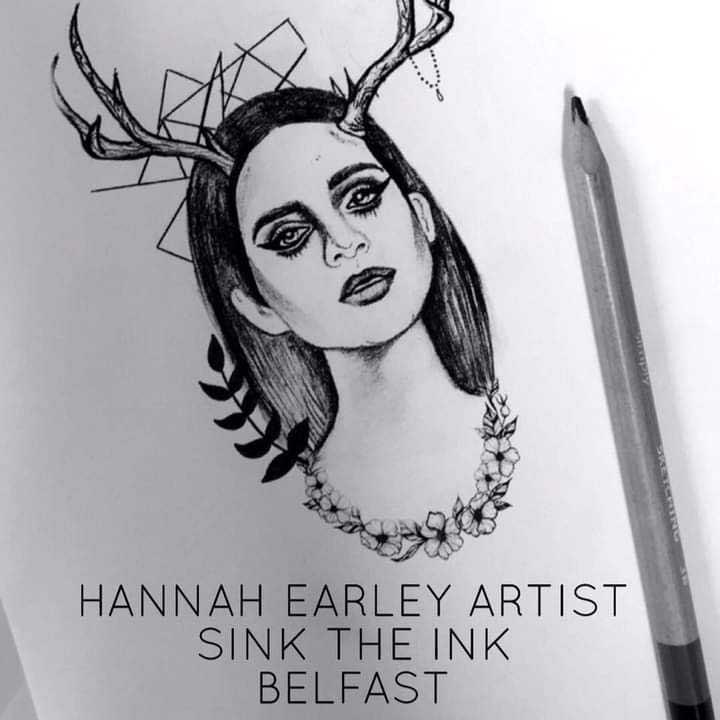
“Tattoos and body modifications were something that always interested me from a young age. When I first saw them, I remember thinking it was beautiful that we, as humans, can choose how we want to adorn our skin and be our true selves.
“ Being a tattoo artist always seemed like a distant dream until I finished my first year of art school. Knowing that I didn’t want to go back for a second year, I turned to drawing tattoo flash in my free time. It began as something I did for pleasure and it led to me landing an apprenticeship.”
Would you say there are more female tattoo artists than when you began ?
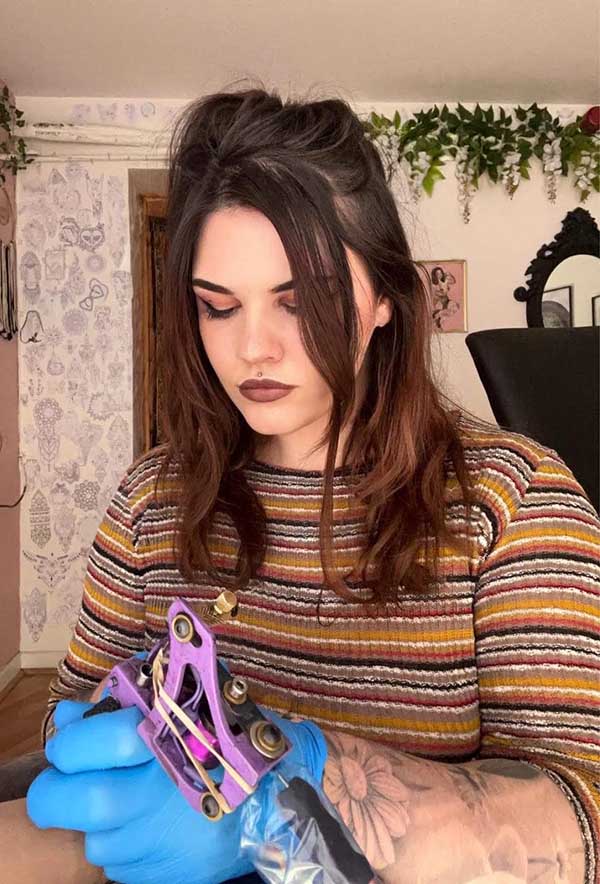
“When I began it seemed as though most studios, especially in County Down where I am from, were predominantly men with a few female tattooists. Now there are studios everywhere with a higher majority of females or all females, which I think is amazing!“
What are common misconceptions about being a tattoo artist and being on the receiving end ?
“I feel that being a tattoo artist, to the outside world, looks like a glamorous job, and seen as easy money. That isn’t always the case. Yes, there is great potential to earn, but a lot of our work is done behind the scenes. Therefore, it can be difficult to juggle a full-time career on top of other obligations such as family, friends, self-care and hobbies.
How did you survive the COVID period when you had to shut and how has trade been affected since?
“Myself, like many other artists, began to sell other forms of artwork. Vouchers and deposits for future tattoos helped us get by.
“Closing and reopening so many times was extremely hard from both a financial and mental perspective, but we are stronger because of it. Thankfully clients were eager to get tattooed and we were excited to be back in the studio.
“We have continued to stay busy and hopefully from here we can continue to thrive on our artistic journey.”
























